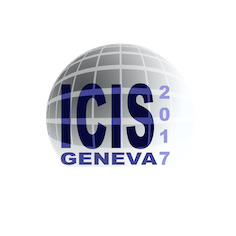Speaker
Description
Despite the manifold new developments introduced to ISOL (Isotope Separation Online) target units within the last 60 years, the beam extraction of elements with very high boiling points (refractory elements) remains a very challenging topic. Due to their vanishingly low volatility, radionuclides of these elements generated by the driver beam are captured within the target and suffer from hampered release [1].
A common method to create beams of less volatile elements is the extraction as molecular sidebands. Just recently exotic boron beams could be produced as BFx+ molecular ions by ionization with an arc-discharge type VADIS ion source [2, 3], which is typically operated at temperatures of about 2000 °C. Taking into account the typical target temperature in the same range, only compounds exhibiting a certain stability at high temperatures were considered at the CERN-ISOLDE facility so far.
However, following new developments, which came up in the field of superheavy element chemistry within the last years [4], a new compound class might open up new perspectives for the extraction of the most refractory elements. Highly volatile carbonyl complexes M(CO)x, x=5-6 of suitable elements were found to form already at ambient temperature and pressure upon thermalizing fission fragments in a carbon monoxide-containing atmosphere. The fact, that nine out of fifteen transition metals, which are not yet available as beam, form volatile carbonyl compounds demonstrates the potential of the “carbonyl method”.
While carbonyl compounds have proven to be suitable means of transportation, they are delicate compounds. Decomposition on hot surfaces, by electron beams, in plasmas and upon exposure to UV-light is expected, which provides new challenges for the ionization of the compound. This is especially the case for radioactive beam ion sources. Here the ion source is included in a robot-swappable combined target and ion source assembly and must therefore be compact. At the same time, the limited production rate of radionuclides demands a high efficiency of the source.
Within this work, different types of ion sources were systematically investigated with respect to their applicability for carbonyl complex ionization. To account for the thermal fragility, a VADIS ion source was modified to allow the injection of carbonyl complexes along a colder path directly into the anode body of the source. Moreover, two RF cold plasma sources were tested. These were the 2.45 GHz microwave driven COMIC source equipped with a quartz chamber [5], and the HELICON source [6], which is typically operated in the region between 170 and 180 MHz.
Finally, the laser-induced break-up of carbonyl complexes as essential preparatory step to resonant laser ionization was also experimentally addressed. As next steps, we plan to conduct on-line experiments to investigate the carbonyl-based beam production at ISOLDE as well as further ionization tests with a mono charge ECR ion source.
References
[1] U. Köster et. al., (Im-)possible ISOL beams, Eur. Phys. J. Special Topics 150, 285-291 (2007).
[2] L. Penescu et al., Development of high efficiency Versatile Arc Discharge Ion Source at CERN ISOLDE. Rev. Sci. Ins. 81, 02A906, 2010.
[3] C. Seiffert, Production of radioactive molecular beams for CERN-ISOLDE, Doctoral dissertation, Technische Universität Darmstadt (2014), https://cds.cern.ch/record/2064456
[4] J. Even et. al., In-situ formation, thermal decomposition, and adsorption studies of transition metal carbonyl complexes with short-lived radioisotopes, Radiochimica Acta 102, 1093-1110 (2014).
[5] P. Sortais et al., Ultracompact/ultralow power electron cyclotron resonance ion source for multipurpose applications Rev. Sci. Ins. 81 (2010), 02B314.
[6] M. Kronberger et al., Production of molecular sideband radioisotope beams at CERN-ISOLDE using a Helicon-type plasma ion source, Nucl. Ins. Meth. B, 15 (2013), 438.




